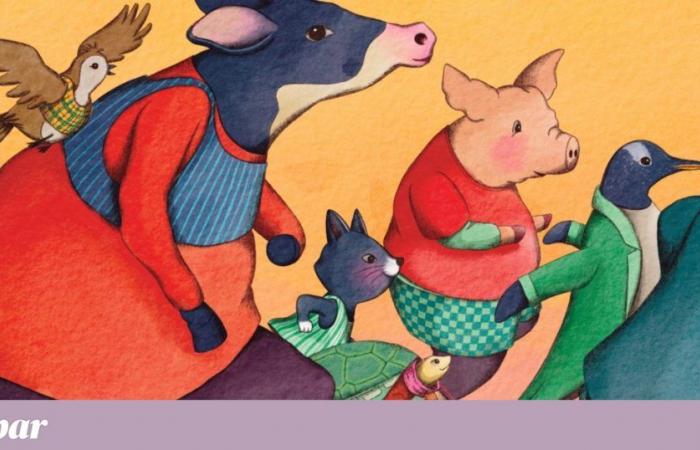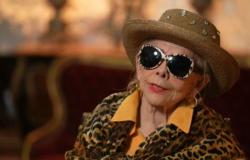“If this story were about animals, the snail wouldn’t come in, because everyone else was running as fast as they could, in search of what, we don’t know”, begins a somewhat mysterious narrative full of movement and color.
Without pedagogical purposes, it ends up making us think about the weaknesses of those who cannot compete with others, who are more resistant and persistent, but who do not give up on reaching the end. Whether in a race or in anything else they set out to do.
Author and editor Carlos Nuno Granja explains to PÚBLICO: “If This Story Were About Animals was born from an idea that is essentially based on deconstruction, narrative experimentalism, in the desire to provoke the reader, to arouse curiosity, in which leaving logic and observing outside the box is a common procedure in my writing exercise. I try to have fun, having fun.”
A book that reflects the philosophy of the publishing house he directs, in Ovar: “This book represents what Doninha Ternurenta’s seal intends to bring to children’s literature, a freshness, an independent path based on the experience we absorb when interacting with many books and with young readers. He is a Ternuous Weasel who wants to fly, climb trees, travel through clouds and conquer space in rockets full of aliens.”
Carla Nazareth
The professor and bookseller also says that “the text is not aimed at teaching or pedagogical advice, or stereotypical messages, or obvious paths”. In fact, “the text follows a direction, but it may not be something concrete, it may just be an assumption, and then I leave the decision in the hands of the readers”. It will be up to him to decide: “Is it or isn’t it? And what is it?”
In addition to the snail, others would be excluded if this story were about animals: the turtle, the ant, the sloth, the cicada, the seahorse, the koala and the manatee. “Because everyone else was running as fast as they could, in search of what, we don’t know. Maybe a futuristic rocket or incredible news: ‘Today is the day of big news! Today is the big day! It’s all or nothing day.”
If it weren’t about animals, everyone would have a place: “The ending reveals to us that we are all in the same boat, on the same planet, in the same space. Within the inversions and reversals of text, which can lead to deception and/or curiosity, the characters assume their rhythm and can themselves call for a boycott, leaving readers in the pendulum: go back, stop there or move forward? ”
An interesting and uplifting exercise, stopping, looking around and deciding where to go. Or even not go.
fable tone
The illustrator, Carla Nazareth, tells PÚBLICO via email: “When Carlos presented this story to me, I saw so many interesting meanings in it, I saw a text so simple, but, at the same time, so richly modeled, that I couldn’t help but feel excited about the invitation to illustrate it.”
Carla Nazareth
He aligned the images with “growing throughout the book”. It worked out well. He describes it like this: “The characters run (or slower), enter and leave the physical limits of the work, add to each other, subtract from each other, follow each other (or stay behind), advance, stop and go back. It was in the same fable tone, with the same sense of humor, that I then decided to humanize them and bring them to us in bright, warm colors and a special light, because This book is about the light and warmth of human attitudes..”
Although he began his career using watercolor, acrylic and collage, he has chosen the digital technique to illustrate for 25 years, even though he has never abandoned pencil and paper — which he does not give up, especially during the drawing phase. “Then, digital painting allows me to work anytime, anywhere, without time or lighting constraints. I mix analog and digital, but, Even if I change the type of brushes, in the end, it’s always me printed in the images”, he states.
The illustrator also says: “I always work with the aim of making my contribution to an even better result, more stimulating, richer in readings and pointing out meanings.” And she recalls the well-known phrase: “Whoever tells a story adds a point.” To conclude: “In my role of retelling stories through images, I really enjoy it — and question it! — for this to happen.” And it happened.
More Letra Pequena articles and Letra Pequena blog






